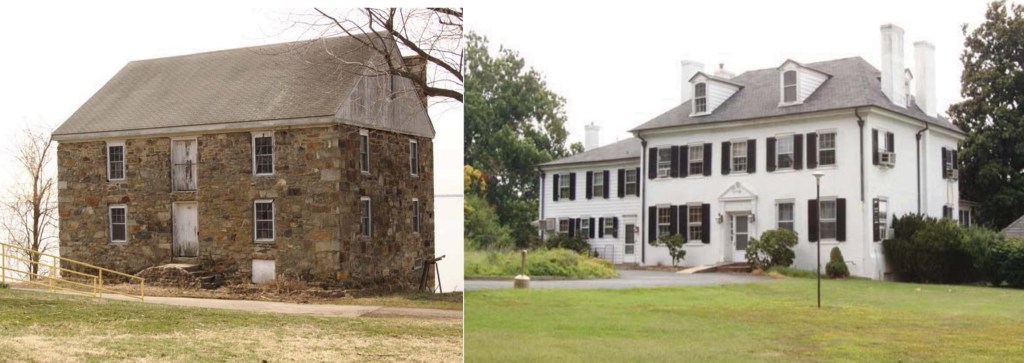
VA manages more than 1,700 historic properties, but none older than the Grist Mill and Mansion House on the campus of the Perry Point VA Medical Center in Maryland. The two were built sometime around 1750 when Perry Point was a prosperous farm on a peninsula where the Susquehanna River meets the Chesapeake Bay. During the War of 1812, the property survived the British amphibious raids on the upper Chesapeake intact, although the town of Havre de Grace across the river was burned to the ground.
In the late 1840s, the site gained in importance as a transportation hub when the owner of the estate, John Stump II, allowed the Philadelphia, Wilmington and Baltimore Railroad to lay track across his land. The construction of the bridge spanning the Susquehanna in 1866 completed the direct rail connection between Philadelphia and Baltimore.
With the onset of the Civil War, the Stump family permitted the Union Army to take temporary possession of the property and use it as a cavalry training station. The government came calling again, this time permanently, after the United States entered World War I in 1917. Perry Point’s strategic location astride the railroad at the mouth of the Susquehanna River attracted the interest of government officials who were looking for a location to establish an ammonium nitrate plant, a critical ingredient for the manufacture of high explosives. The Stump family agreed to sell almost a third of the 1,800-estate, the Grist Mill and Mansion House included, to the government for $150,000.

Perry Point’s time as a munitions site ended with the armistice in November 1918. A few months later, the U.S. Public Health Service (PHS) took over the property and began converting buildings in the residential community established for workers at the plant into a hospital for the treatment of war Veterans with neuropsychiatric conditions.
In 1922, the Veterans’ Bureau assumed responsibility for Perry Point as well as all other PHS medical facilities serving Veterans. Generous appropriations from Congress funded the rapid expansion of the Perry Point campus in the mid-1920s. In addition to five patient wards constructed in 1921-22, Perry Point added one building for diagnostic services, two for continued treatment, and a fourth devoted to Veterans with tuberculosis. Capping off the new construction were a recreation building equipped with a gymnasium and pool, and a separate dining hall and kitchen capable of feeding up to 1,000 patients at a time.
The intervening years have seen more growth at Perry Point. The medical center returned to its post-WWI roots as a neuropsychiatric hospital with the construction of extensive inpatient and outpatient facilities for Veterans with mental health care needs in the early 2000s. The complex now counts over 85 buildings spread across almost 400 acres. For all of the dramatic changes that have taken place at Perry Point, however, the Grist Mill and Mansion House remain fixtures on the property, carefully preserved by VA to maintain their historical appearance. The Mansion House is closed to the public, but visitors can tour the Grist Mill, which has been turned into a small museum.
For more on the Perry Point medical center and its history, check out the video below by the Veterans Health Administration.

By Charles Rutledge
Virtual Student Federal Service Intern, Office of Construction & Facilities Management
Share this story
Related Stories

History of VA in 100 Objects
Object 96: Postcard of Veterans Vocational School
In 1918, the government created the first nationwide vocational training system to help disabled Veterans acquire new occupational skills and find meaningful work. Over the next 10 years, more than 100,000 Veterans completed training programs in every field from agriculture and manufacturing to business and photography.

History of VA in 100 Objects
Object 95: 1840 Census of Pensioners
In a first, the 1840 census collected data on Veterans and widows receiving a pension from the federal government. The government published its findings in a stand-alone volume titled “A Census of Pensioners for Revolutionary or Military Services.”

History of VA in 100 Objects
Object 94: Southern Branch of the National Home
The Southern Branch of the National Home for Disabled Volunteer Soldiers opened in Hampton, Virginia, in late 1870. The circumstances surrounding the purchase of the property, however, prompted an investigation into the first president of the National Home’s Board of Managers, Benjamin Butler.


